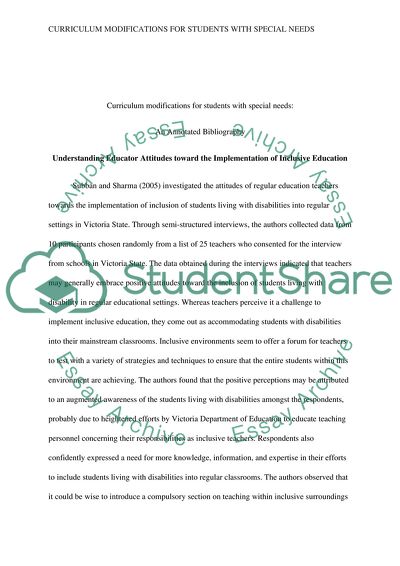Cite this document
(Curriculum Modifications for Students with Special Needs Annotated Bibliography Example | Topics and Well Written Essays - 2750 words, n.d.)
Curriculum Modifications for Students with Special Needs Annotated Bibliography Example | Topics and Well Written Essays - 2750 words. https://studentshare.org/education/1817592-topic-curriculum-modifications-for-students-with-special-needs
Curriculum Modifications for Students with Special Needs Annotated Bibliography Example | Topics and Well Written Essays - 2750 words. https://studentshare.org/education/1817592-topic-curriculum-modifications-for-students-with-special-needs
(Curriculum Modifications for Students With Special Needs Annotated Bibliography Example | Topics and Well Written Essays - 2750 Words)
Curriculum Modifications for Students With Special Needs Annotated Bibliography Example | Topics and Well Written Essays - 2750 Words. https://studentshare.org/education/1817592-topic-curriculum-modifications-for-students-with-special-needs.
Curriculum Modifications for Students With Special Needs Annotated Bibliography Example | Topics and Well Written Essays - 2750 Words. https://studentshare.org/education/1817592-topic-curriculum-modifications-for-students-with-special-needs.
“Curriculum Modifications for Students With Special Needs Annotated Bibliography Example | Topics and Well Written Essays - 2750 Words”. https://studentshare.org/education/1817592-topic-curriculum-modifications-for-students-with-special-needs.


